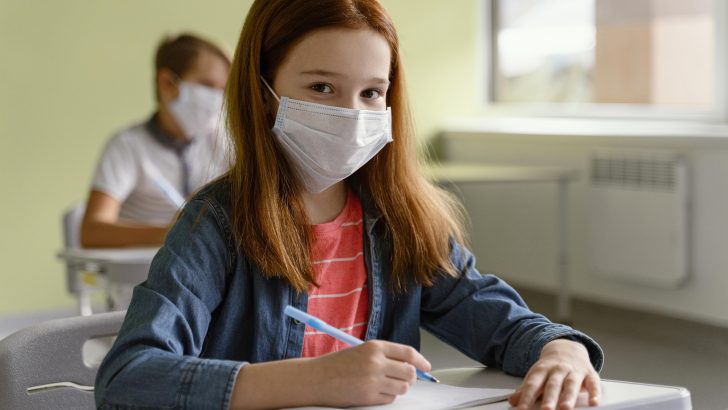The kids were only back in school a few days before the inevitable message from school came through. A child in one of our kids’ classes had tested positive for Covid. We soon learned that it was not a child in our child’s pod, and so she could continue to go to school if we wished, according to the HSE’s guidance. The school was wonderfully communicative, and fully supportive of any decisions which parents might make – whether to keep kids out, or to send them in, acknowledging that every family had different circumstances to consider.
With some reluctance, we decided to send her in for a day. Yet that very evening, more messages came through, and we learned that other kids had tested positive. The HSE advice was now that the entire class were close contacts should get tested, stay home for at least 10 days. Pending the outcome of the initial test, the other kids also would have to stay home.
So, once again, all the kids are at home thanks to coronavirus. Yet again, we have to watch anxiously for symptoms. Hopefully, those kids who are sick will recover swiftly. Yet while the illness is thankfully mild for most kids, it’s clearly best avoided. After all, with a new virus we cannot know whether there could be any long-term consequences.
Small children process their worries in funny ways, and cannot always articulate their anxieties. You usually find out that they’re worried when they start behaving unusually. I know that our child knows that the illness is usually mild for children. Yet she also knows that her grandmother died of coronavirus earlier this year. She now knows that she was in a school with kids who had coronavirus last week. Her only remaining grandmother is staying with us now. Although she’s vaccinated, it would only be natural for any child to harbour anxieties in these circumstances.
Only last week, I heard her crying in the hallway. I went outside to see what was wrong, expecting that she might have fallen over, or was frustrated that she couldn’t find a toy. Instead, I found her clutching a picture of her and my mother together, which she had taken down from the wall. “I miss her so much” she said, her eyes big with tears. We hugged and talked for a long time. It’s good that she can express her grief, yet it’s tragic to think what this virus has taken from her and so many other children. It has taken loved ones, as well as disrupting their schooling, their sports, their friendships, their holidays. It caused cancelled birthday parties, a lack of playdates, a lack of freedom and a million other injuries to millions of childhoods – all of which add up to a big wound.
During the lockdowns, we were fortunate to be living in a rural area with plenty of open space, and a large enough family to ensure that there was never a quiet moment for the kids. They were never short of company, whether human or animal. Yet many kids were confined to small spaces, isolated from friends. Teachers I know say that many are struggling to reacclimatise to school life, after so much time alone.
At least the older kids knew what school life was like before coronavirus. The younger cohort who started school just before the pandemic arrived, cannot recall having the simple certainty that school will be open next week. They are used to being isolated from other classes, divided into pods, and being told to avoid others. They can hardly remember a time when adults did not wear masks in the shops, nor when overseas travel was routine. The way the world was before the coronavirus pandemic eludes their memories.
There’s plenty of hope to brighten the horizon, and the success of the vaccine programme means that many things look set to return to something resembling normality before too long. Yet we had hoped for a normal return to school this September, but we have not had it. We must continue to hope for the best. It’s important to try to see these strange times through the eyes of children too, and to do all we can to support them as – hopefully – the dark tide of this pandemic begins to slowly recede.


 Rory Fitzgerald
Rory Fitzgerald
